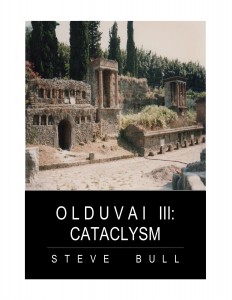Home » Posts tagged 'commons transition'
Tag Archives: commons transition
Community Development and the Commons
Community Development and the Commons The commons offers a framework and a process for effectively and equitably stewarding the resources communities need to live in dignity. Last August, 200 people from across Oakland, California came together to envision and design a development plan for a small parcel of public land. For months leading up to […]
Making, adapting, sharing: fabricating open-source agricultural tools
Making, adapting, sharing: fabricating open-source agricultural tools This is a story about people who build their own machines. It’s a story about people who, due to necessity and/or conscious choice, do not buy commercial equipment to work their lands or animals, but who invent, create and adapt machines to their specific needs: for harvesting legumes, […]
Our Economy is a Degenerative System
Our Economy is a Degenerative System Impacts of resource hungry exploitative economies “What is 120 times the size of London? The answer: the land or ecological footprint required to supply London’s needs.” — Herbert Giradet Our ecological footprint exceeds the Earth’s capacity to regenerate. A number of useful indicators and frameworks have been developed to measure the […]
Rethinking the balance between equality and hierarchy: 2) New insights into the evolution of hierarchy and inequality throughout the ages
Rethinking the balance between equality and hierarchy: 2) New insights into the evolution of hierarchy and inequality throughout the ages This is a follow up on our earlier article on finding techniques for ‘reverse dominance’, i.e. avoiding the concentration of power. More indications of how to restore a new balance towards egalitarian (or rather ‘equipotential’) […]
Beet the System! A Dialogue on Food Sovereignty, Inclusivity and Healing the Rural/Urban Divide.
BEET THE SYSTEM! A DIALOGUE ON FOOD SOVEREIGNTY, INCLUSIVITY AND HEALING THE RURAL/URBAN DIVIDE. Can food and food sovereignty be the catalyst for a Commons Transition? For over 30 years, FIAN International has been advocating for the right to food sovereignty. Their work unites bottom-up grassroots movements and local administrations, with a special focus on inclusivity […]
Mapping the Emerging Post-Capitalist Paradigm and Its Main Thinkers
MAPPING THE EMERGING POST-CAPITALIST PARADIGM AND ITS MAIN THINKERS “We do not live in an era of change, but in a change of eras” is the way Jan Rotmans from the University Rotterdam describes the structural changes impacting our societies. This is also the phrase Michel Bauwens chose to open his latest book yet to […]
Seeing the Forest
Seeing the Forest Seeing the Forest tells the story of the Siuslaw National Forest in Oregon — how it made a successful transition from timber extraction to ecosystem restoration. Once the epicenter of conflict, the Siuslaw today is an exemplar of cooperation and collaboration. They harvest wood sustainably by thinning overly dense monoculture stands that are […]
P2P Revolution and Commons Phase Transition
P2P Revolution and Commons Phase Transition At the P2P Foundation, we don’t use the moniker ‘revolution’ with much frequency, preferring the concept of phase transition. In this article, we would like to elucidate the relation between the two concepts. In my experience, revolution is used in two quite different senses; in a generic sense, it […]
Andrianna Natsoulas on Food Sovereignty and the Commons
Andrianna Natsoulas on Food Sovereignty and the Commons As part of our series on the 100 Women Who Are Co-Creating the P2P Society, the P2P Foundation’s Michel Bauwens interviews Andrianna Natsoulas from FoodSources.org Q: You are mostly known for your work around food sovereignty, can you tell us a bit of personal history and how you decided to get engaged on that […]



